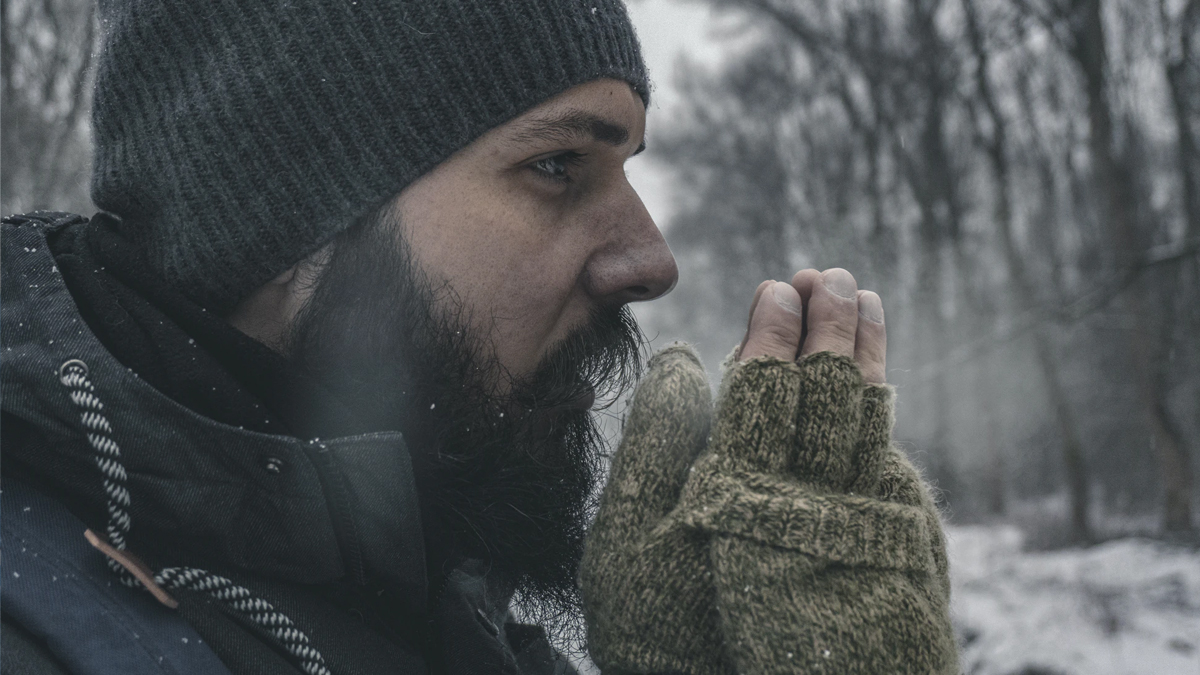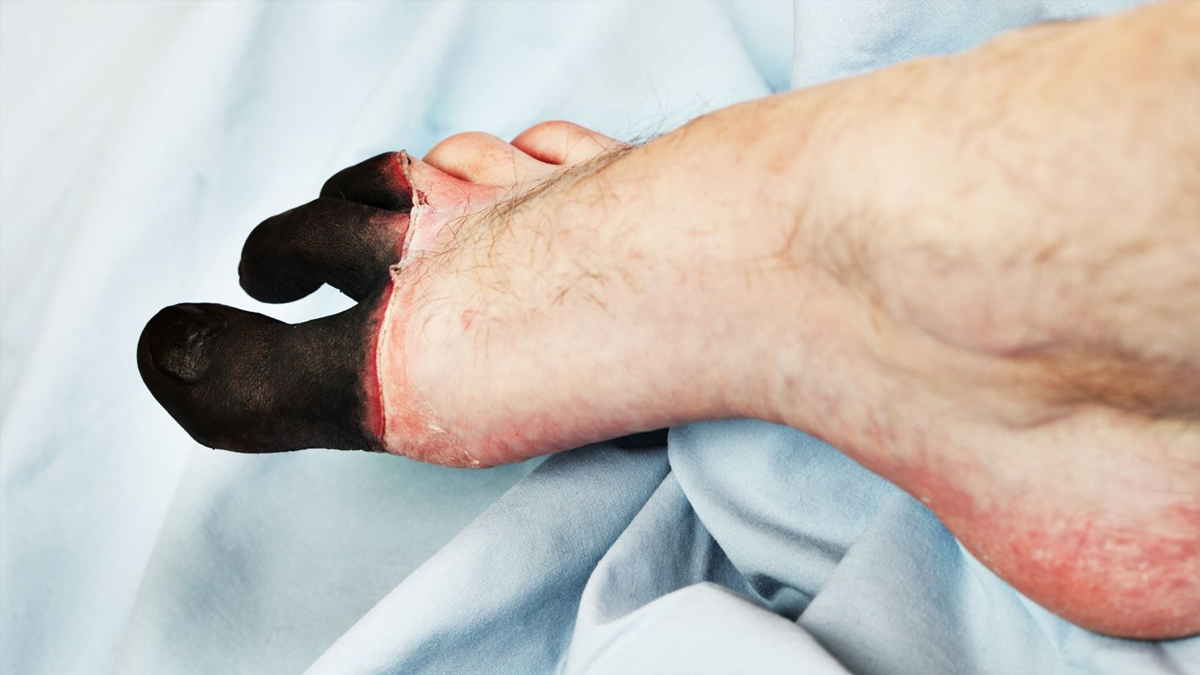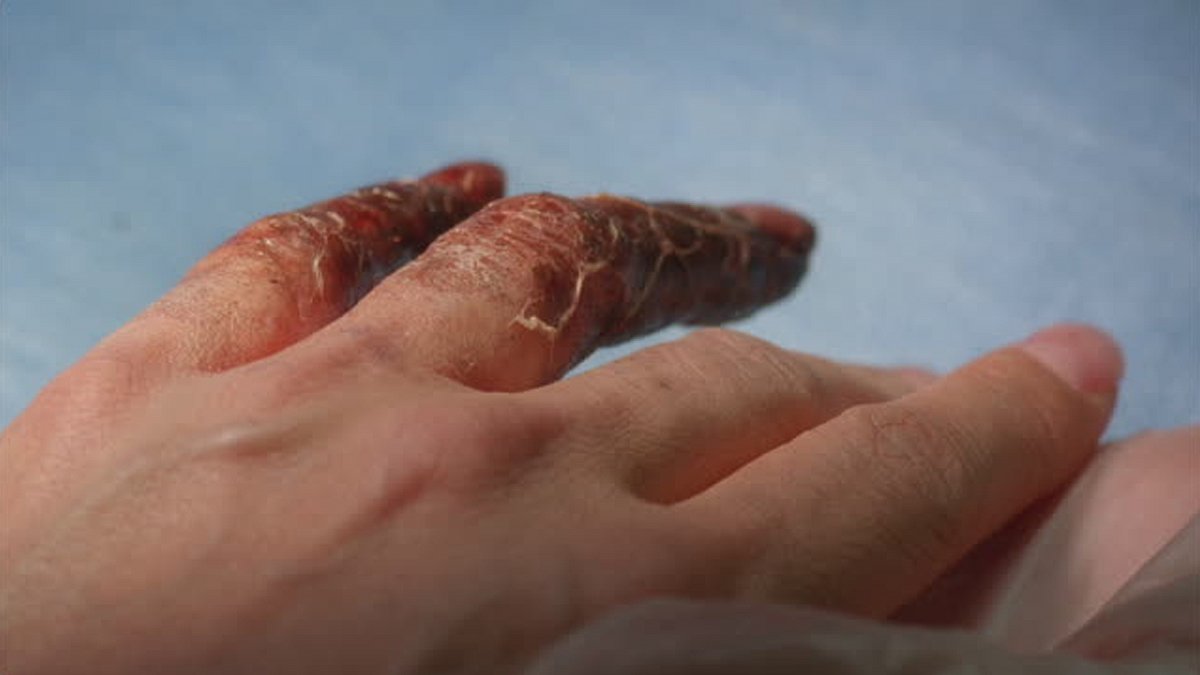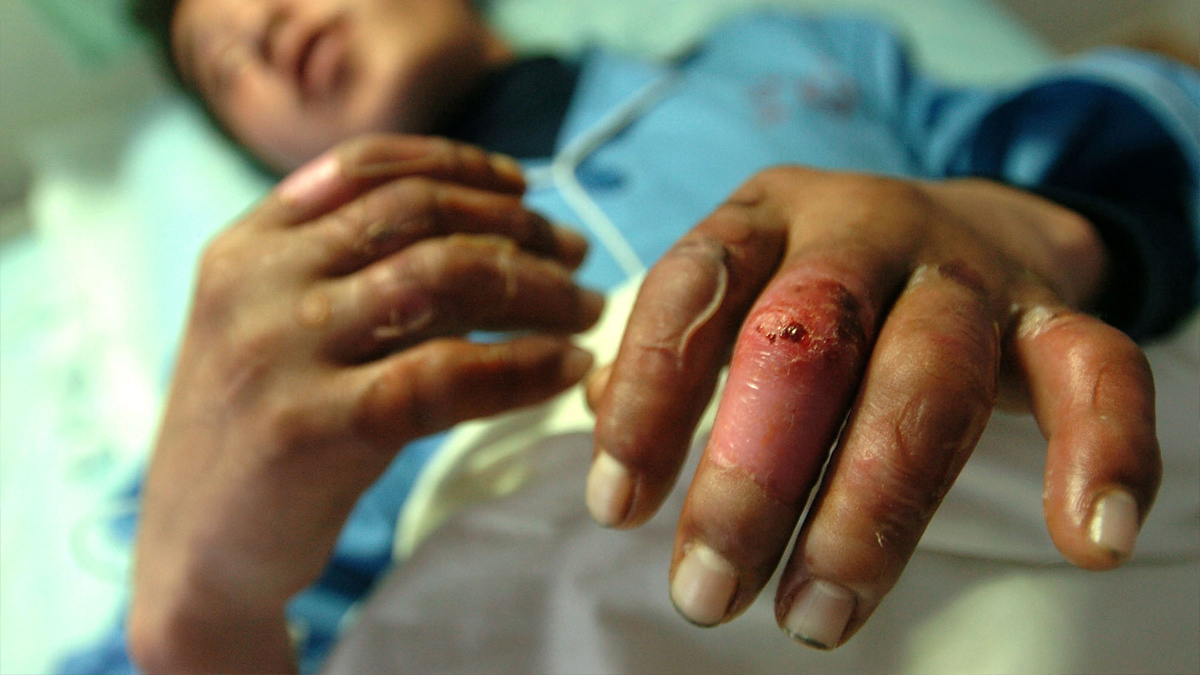on
Frostbite happens when parts of the body freeze. The most common areas of frostbite are areas that are the furthest away from the middle of the body, or body core, such as feet, toes, hands, fingers, nose, cheeks and ears because these are furthest from the heart. Frostbite can occur when the body part is exposed to freezing temperatures for an extended amount of time, or a more brief exposure to cold temperatures when it is also windy.
Everyone is at risk in these conditions, but those more at risk are those who are diabetic, take heart medications called ‘beta blockers, have circulation problems, are smokers, drink alcohol during freezing conditions or are elderly or young children.
How to prevent frostbite
To stay warm and prevent frostbite, follow these tips from the American Academy of Dermatology:
- Dress in loose, light, comfortable layers. Wearing loose, light layers helps trap warm air. The first layer should be made of a synthetic material, which wicks moisture away from your body. The next layer should be insulating. Wool and fleece are good insulators and hold in more body heat than cotton. The top layer should be windproof and waterproof. A down parka and ski pants can help keep you dry and warm during outdoor activities.
- Protect your feet and toes. To protect your feet and toes, wear two pairs of socks. The first pair, next to your skin, should be made of moisture-wicking fabric. Place a pair of wool or wool-blend socks on top of those. Your boots should also provide adequate insulation. They should be waterproof and cover your ankles. Make sure that nothing feels tight, as tight clothing increases the risk of frostbite.

- Protect your head. To protect your ears and head, wear a heavy wool or fleece hat. If you are outside on a bitterly cold day, cover your face with a scarf or face mask. This warms the air you breathe and helps prevent frostbite on your nose and face.
- Protect your hands. Wear insulated mittens or gloves to help protect your hands from the cold.
- Make sure snow cannot get inside of your boots or clothing. Wet clothing increases the risk of developing frostbite. Before heading outdoors, make sure that snow cannot easily get inside of your boots or clothing. While outdoors, if you start to sweat, cut back on your activity or unzip your jacket a bit.
- Keep yourself hydrated. Becoming dehydrated also increases the risk of developing frostbite. Even if you are not thirsty, drink at least one glass of water before you head outside, and always drink water or a sports drink before an outdoor workout. In addition, avoid alcohol, as it increases your risk for frostbite.
- Recognize the symptoms. In order to detect frostbite early, when it’s most treatable, it’s important to recognize the symptoms. The first signs of frostbite include redness and a stinging, burning, throbbing or prickling sensation followed by numbness. If this occurs, head indoors immediately.
Three Levels of Frostbite
- Frostnip: This is when only the surface of the skin gets affected from exposure to the cold. The skin can become red at first and then can turn cold and become numb. The skin remains soft and moveable. There are usually no long-term problems after frostnip. In fact, frostnip can even occur when a first-aid ice pack is applied with no protective layer, such as a towel, placed between your skin and the ice pack. It can also occur if an ice pack is left on the skin for longer than 20 minutes.
- Superficial frostbite: The skin can freeze and become hard, and it becomes waxy in appearance. Blisters will often occur following this degree of frostbite and can turn black and appear worse than they actually are. This level of frostbite usually heals within one month with proper treatment.

- Deep frostbite: This is severe. The skin, muscles, tendons, blood vessels and nerves can all become damaged from freezing. The skin is hard and waxy and is not flexible or moveable. Initially, the injury may be painless. Depending on how long and how deep the tissue is frozen, permanent nerve and tissue damage can occur. This level of frostbite may even result in the affected area needing to be amputated.
Recognizing the symptoms of frostbite
According to WebMD the symptoms of frostbite depend on how deep it goes into the body. As mentioned above there are three stages. Early frostbite affects the top layers of the skin. More advanced cases can go all the way to the muscles and bones.
Early stage
- Skin turns a pale yellow or white
- It may itch, sting, burn, or feel like “pins and needles.”
Intermediate stage

- Skin becomes hard
- It looks shiny or waxy
- When the skin thaws, blisters filled with fluid or blood form
Advanced stage
- Skin is very hard and cold to the touch
- Skin darkens quickly. It may look blue and later turn black
Some people don’t know they have frostbite because as it gets worse, you can’t feel the area anymore. That’s why you need to look for changes in skin color.
Treatment for Frostbite
Subscribe for FREE to Continue Reading
Subscribe for FREE to get access to all of our premium content and get an email when new content is added.
The purpose of this blog is to present preparedness ideas for those that are brand new to the idea of being prepared for various disasters. We will also provide information for experienced ‘preppers’.
Get access to premium content and more!





